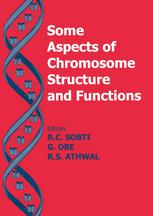

Most ebook files are in PDF format, so you can easily read them using various software such as Foxit Reader or directly on the Google Chrome browser.
Some ebook files are released by publishers in other formats such as .awz, .mobi, .epub, .fb2, etc. You may need to install specific software to read these formats on mobile/PC, such as Calibre.
Please read the tutorial at this link: https://ebookbell.com/faq
We offer FREE conversion to the popular formats you request; however, this may take some time. Therefore, right after payment, please email us, and we will try to provide the service as quickly as possible.
For some exceptional file formats or broken links (if any), please refrain from opening any disputes. Instead, email us first, and we will try to assist within a maximum of 6 hours.
EbookBell Team

5.0
30 reviewsIt was at the end of the 19th century that a Swiss biologist, Karl Nageli first proposed the existence of hereditary organelles that carried information from parent to offspring. Ensuing decades experienced vigorous studies that led to the development of discovery that chromosomes are indeed the carriers of genetic information. Subsequent studies, especially by Morgan and Bridges, established unequivocally the chromosome theory of inheritance. Today, the structure of chromosome is well established. At the physical level, eukaryotic chromosomes are composed of a single, linear, double helix of DNA. The elementary helical structure involves nucleosomes, comprised of histones around which the DNA is wrapped. A hierarchy of higher order of chromosomal architecture may possibly be responsible for the regulation of gene helical structures expression. The localized condensations of DNA constitute chromomeres. Uncoiled structures sometimes extending from chromomeres, which form loops, is the result of discontinuities in the regular coiling of the DNA in the chromosome.